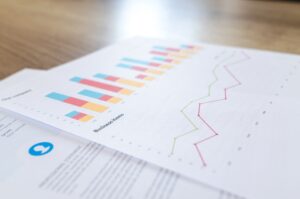Societe Generale:
With the ECB now unabashedly unleashing a bond bubble in Europe of which it has promised to be a buyer of last resort with the stronly implied hint that European IG companies should issue bonds and buy back shares, and promptly leading to the biggest junk bond issue in history courtesy of Numericable, it will come as no surprise that the world once again has a debt problem.
For the best description of just how bad said problem is we go to SocGen’s Andrew Lapthorne, one of last few sane analyzers of actual data, a person who first reveaked the stunning fact that every dollar in incremental debt in the 21st century has gone to fund stock buybacks, and who in a note today asks whether “central bank policies going to bankrupt corporate America?”
His answer is, unless something changes, a resounding yes.
Here are the key excerpts:
Sensationalist headlines such as the one above are there to grab the reader’s attention, but the question is nonetheless a serious one. Aggressive monetary policy in the form of QE and zero or negative interest rates is all about encouraging (forcing?) borrowers to take on more and more debt in an attempt to boost economic activity, effectively mortgaging future growth to compensate for the lack of demand today. These central bank policies are having some serious unintended consequences, particular on mid cap and smaller cap stocks.
Aggressive central bank monetary policies have created artificial demand for corporate debt which we think companies are exploiting by issuing debt they do not actually need. The proceeds of this debt raising are then largely reinvested back into the equity market via M&A or share buybacks in an attempt to boost share prices in the absence of actual demand. The effect on US non-financial balance sheets is now starting to look devastating. We’re not the only ones to be worried. The Office of Financial Research (OFR), a body whose function is to assess financial stability for the US Treasury, highlights corporate debt issuance as their primary threat to financial stability going forward.
In our assessment, credit risk in the U.S. nonfinancial business sector is elevated and rising, and by more than depicted in the Financial Stability Monitor. The evidence is broad. Credit growth to the sector has been rapid for years, pushing the ratio of nonfinancial business debt to GDP to a historically high level. Firm leverage is also at elevated levels. Creditor protections remain weak in debt contracts below investment grade. These factors are consistent with the late stage of the credit cycle, which typically precedes a rise in default rates.
The reality is US corporates appear to be spending way too much (over 35% more than their gross operating cash flow, the biggest deficit in over 20 years of data) and are using debt issuance to make up the difference. US corporates will have to borrow over 2.5% of their market capitalisation (over $400bn each year) to, somewhat ironically, buy back their own stock.
This cash flow deficit then needs to be financed, hence the continuing need to raise more and more debt. Current spending implies US non-financials will have to raise another $400bn of debt, a large proportion of which would then be reinvested back into the equity market via share repurchases. Some consider this to be shareholder return, while others (ourselves included) see it as simply remortgaging shareholder equity in an attempt to boost short-term share price performance. This in our view is short-term irrationality.
No matter where you look or how you measure it, leverage is elevated and continues to rise to unusually high levels given where we are in the cycle, with the most worrying rise in small cap stocks’ debt levels. Looking at interest cover is not particularly reassuring either, with the weighted interest coverage ratio approaching the recent low of 2009 when EBIT was depressed and not that far off the 1998/2003 levels when corporate bond yields were significantly higher.
The catalyst for a balance sheet crisis is rarely the affordability of interest rates, so a 25bp rise in Fed rates is neither here nor there. Credit market risk is about assessing the likelihood of getting your money back. As such asset prices (i.e. equity markets) and asset price risk (i.e. equity volatility) are far bigger concerns. So all you need for a balance sheet crisis is declining equity markets, a phenomenon the Fed appears desperate to avoid. Now we know why (see chart below).
Well that, and another reason: as of this moment one can measure the daily credibility of central banks by whether stocks closed higher or lower; too low and everyone starts talking about how CBs no longer have credibility and how they would rather Yellen et al would stop micromanaging everything… and then everyone quiets down when stocks surge back to all time highs. Alas, this means that the markets have not only stopped being a discounting mechanism (or rather they only discount what central banks will do in the immediate future), but have also stopped reflecting the underlying economy a long time ago, something will remains lost on all of the “smartest people in the room.”





